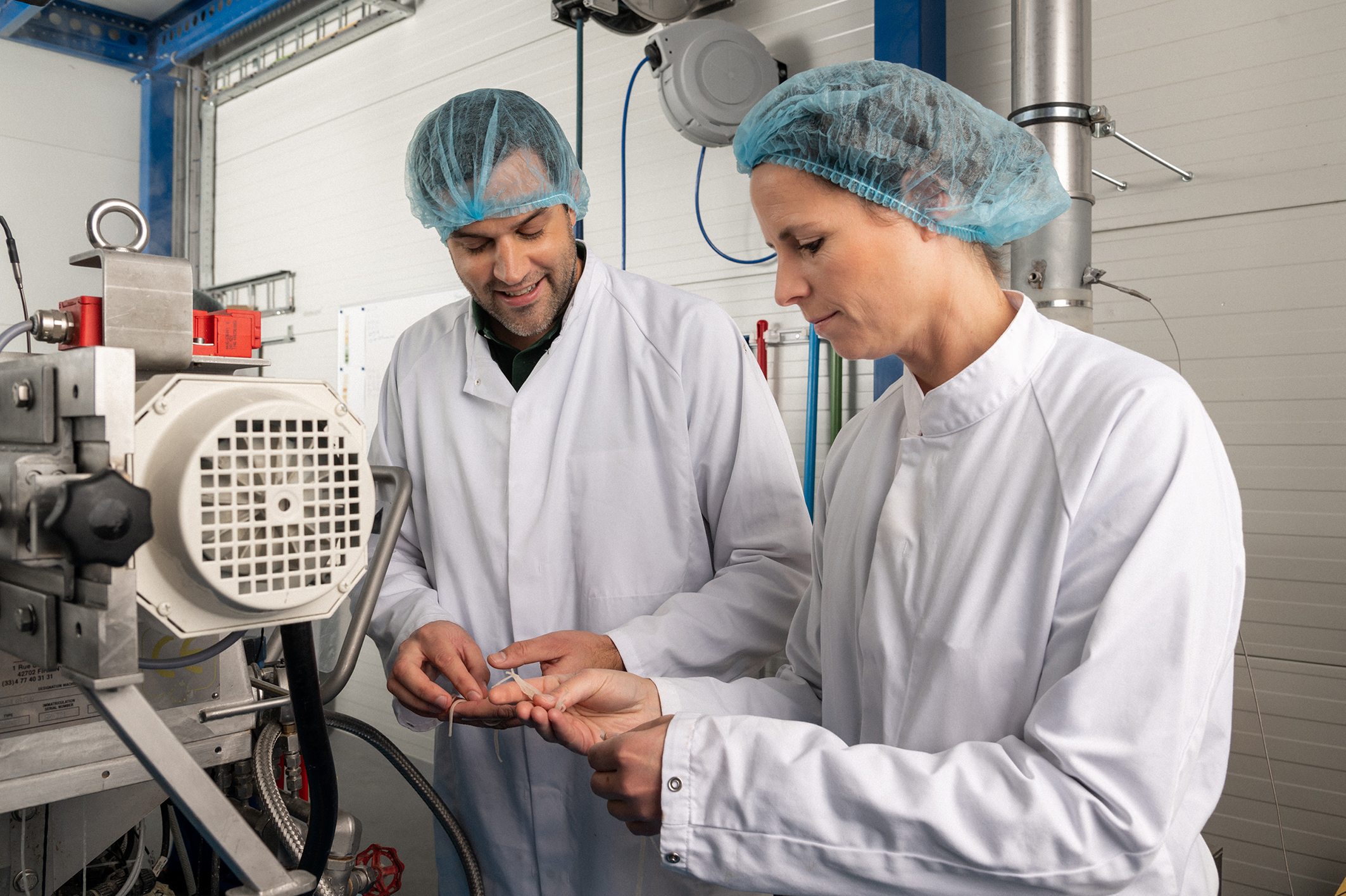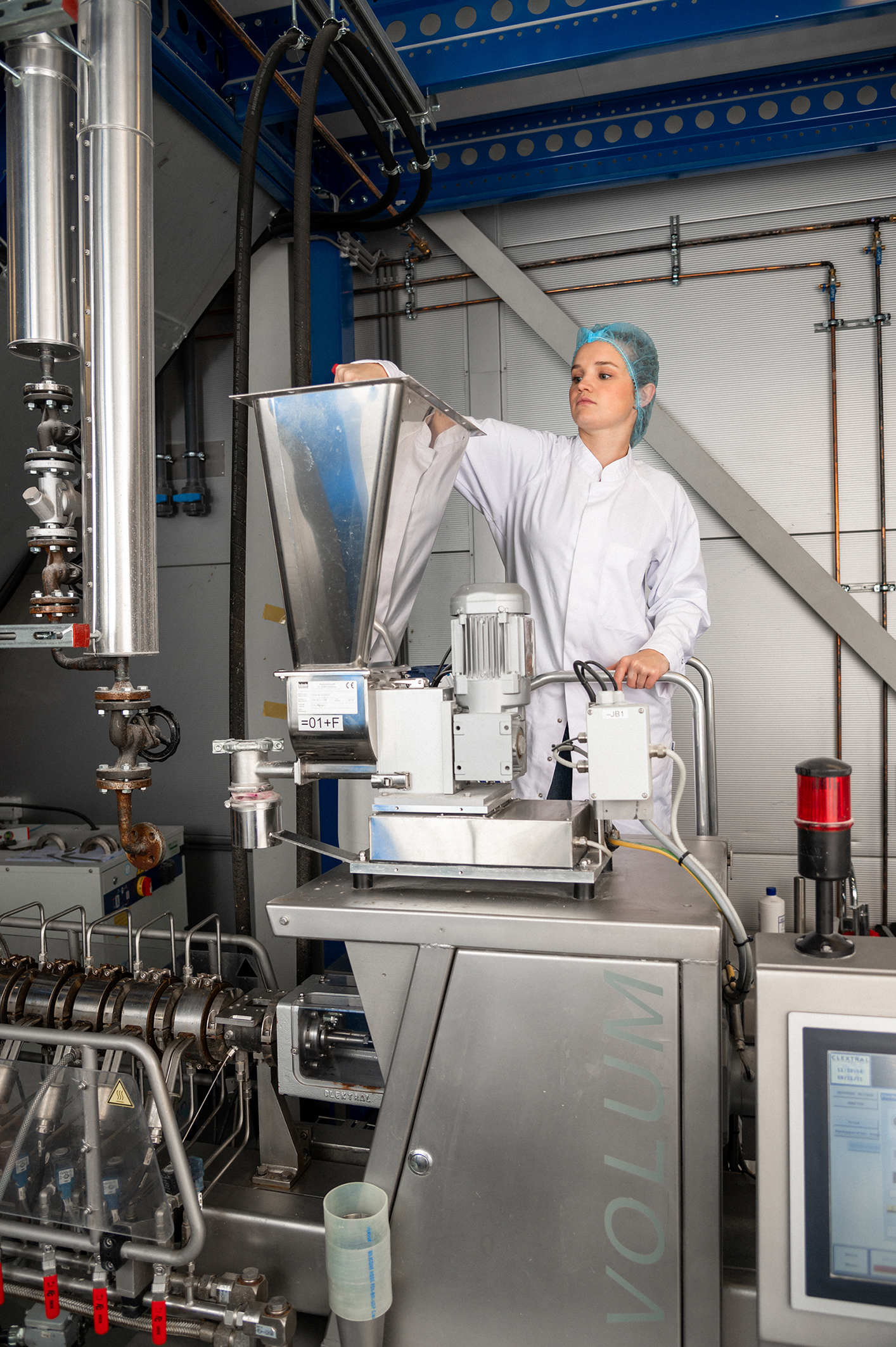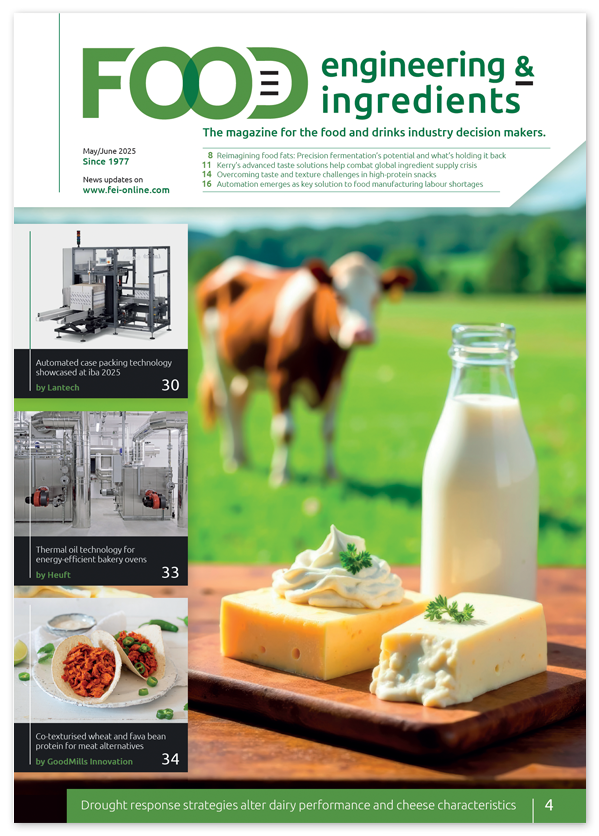Working with an extruder means creating something new every day
Control colour, shape, texture and nutrition
Meat alternatives, crunchy snacks and high-protein baked goods are the on-trend applications of the moment. Each of these products and the processes involved in producing them imposes different demands on the extruded source material to achieve an optimal end product. The Crespel & Deiters Group is therefore investing in its own production facility, including a technical centre, which offers plenty of scope for design.
Extrusion, like no other process, enables a fundamental transformation in industrial food production, turning a powdered or granulated raw material into small, irregular pieces, long fibres or even spherical cereal crisps. However, the variety of available extrusion formats is not the only thing that makes this technique so popular; the protein they contain not only boosts the nutritional profile of the end product, it also meets consumer demand and fits the current zeitgeist. To meet this growing consumer trend, the Crespel & Deiters Group has integrated extrudate manufacturer, Extruded Cereals Products BV (ECP), into its group of companies.
What’s required for extrusion?
The technical process of extrusion is constantly being improved and expanded to explore application areas. ECP, located in Helmond, the Netherlands, has specialised in the production of extrudates since 1998, making it a pioneer in this field. The flourishing coop- eration with the Crespel & Deiters Group has developed over the past 15 years and, today, ECP is recognised as the extrusion expert within the group. Loryma, the brand of the Crespel & Deiters Group responsible for the development and production of wheat-based food ingredients, introduces ingredients and develops concepts with clients, and thanks to ECP, these can be based on customised extrudates. To be extrusion-compatible, a raw material must have a few basic properties: “The wide range of possible starting materials is one of the advantages of extrusion,” explains Christopher Busch, Head of Research & Development Extruded Products, Crespel & Deiters Group. “From starches and protein isolates, dusts and granulates to cereal flours and milk powders, it’s critical that the raw material is flowable and the quality is constant; otherwise, the extrudate will be irregular.”
If these conditions are met, however, nothing stands in the way of the transformation into a functional product. The extruder is the heart of the production plant; here, a raw material such as a flour is shaped by means of heat and pressure through screw conveyors and pressed through a nozzle. As a result, the emerging product is shaped into an appropriate form and can be cut to the desired length.
Maximum flexibility for human and pet food
Texturates for meat alternatives are a prototypical application area for extrudates. No other processing technique can reproduce the texture of meat so authentically. Although raw meat can be proces- sed in many different ways, vegan or vegetarian products require the inclusion of extruded ingredients with specific technological properties. For example, a vegetarian schnitzel needs a completely different base than a veggie topping for a noodle soup.
Busch comments: “The veggie segment is currently in an upbeat mood. Consumers want to reduce their meat consumption and, at the same time, select from a wide range of alternatives. There is a lot of potential here for the industry.”
Sales to the pet food industry are also growing steadily, because items with a reduced or zero meat content are increasingly in demand.
To meet both industry and consumer requirements, targeted adapt- ations and the adjustment of specific end-product properties are possible, as well as being able to offer a wide standard range. For this purpose, the team in Helmond has a test extruder at its disposal: the raw material requirement for a small-scale test series is 15–30 times lower and results can be obtained 3–5 times faster.
“The resources available to us in the extrusion pilot plant represent a real quantum leap in terms of product development. Working with the extruder means creating something new every day,” says Busch.
For example, the R&D-scale extruder enables the production of different shapes and sizes on a trial basis to test the effects of process variables on the texture of the end product. “Currently, we’re also working on more accurately reproducing the texture of fish in plant-based alternatives. In the past, the focus was very much on meat alternatives and, here, we want to get even closer to the original,” explains Busch.
In addition, there is increasing demand for larger, so-called chunks, which are altogether firmer and have a pronounced fibrous structure. There is also a lot of design scope when it comes to colouring, which enables them to meet the current demand for light texturates.
Enhancing nutrition
Besides the colour, the choice of raw materials has a significant impact on nutrition. The proportions of cereal or protein components, as well as influencing the appearance and colouring of the final extrudate, can also be designed to enhance its nutritional content. For example, it may make sense to mix a wheat flour with other raw materials, such as maize, to achieve the desired result.
Optimising the nutritional profile is a key consideration when working with another product group within extrudates: depending on the design, extruded crisps and flakes can be used as a crunchy element in chocolate products, breakfast cereals or muesli bars; in the conven- ience food sector, extruded breadcrumbs enhance breading.
“For health-conscious consumers, sports nutrition products such as protein bars, whey and milk protein are still very much in demand, although vegetable raw materials such as wheat, fava bean, pea, or chick pea can also compete well in terms of protein content,” says Busch. “The composition capabilities are so flexible that sugar- or salt-free alternatives are no problem, just like high-protein or low-carb extrudates.”
A high-protein-content label on any food, but especially in the snack segment, attracts a lot of attention from consumers. It’s a popular buzzword and reflects the active and environmentally conscious lifestyle that is considered desirable.
Thanks to years of expertise, advanced testing equipment and expanded capacities, the ECP team is ready and able to be the service partners for creative product development to meet current and evolving demands.





